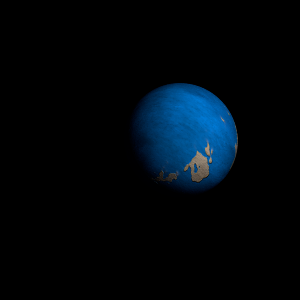|
|
Space Astro
|
Info for exoplanet "Gwang-nyang"
| Scientific (actual) data |
|---|
| Name | LHS 1678 c |
| Planet status | Confirmed |
| Planet mass | 0.00123 |
| Radius | 0.08395 |
| Orbital period | 3.69428 |
| Semi major axis | 0.0327 |
| Orbit eccentricity | 0.039 |
| Inclination | 89.8 |
| Discovered | 2021 |
| Updated | 2024-03-04 |
| Omega | -23 |
| Tzero tr | 2459120 |
| Impact parameter | 0.39 |
| K | 0.01 |
| Publication | Published in a refereed paper |
| Detection type | Primary Transit |
| Mass measurement type | Radial Velocity |
| Radius measurement type | Primary Transit |
| Alternate names | TOI-696 c |
| Star name | LHS 1678 |
| Right ascension | 68.18° |
| Declination | -39.79° |
| Mag v | 12 |
| Star distance | 19.89 |
| Star mass | 0.345 |
| Star radius | 0.329 |
| Star sp type | M2V |
| Star temperature | 3490 |
| Star alternate names | TOI-696 |
| Wikipedia article | LHS 1678 c |
Back
| |
| Fictional info (?) |
|---|
| Suggested name | Gwang-nyang |
| Planet type | Hot planet |
|
| Atmosphere | Oxygen | 72% |
| Krypton | 27% |
| Helium | 0.0072% |
| Ethane | 0.0009% |
| Atmospheric pressure | 80 bar |
 |
| No known satellites |
| Google search for Gwang-nyang |
|
Website by Joachim Michaelis
|
|
|
|